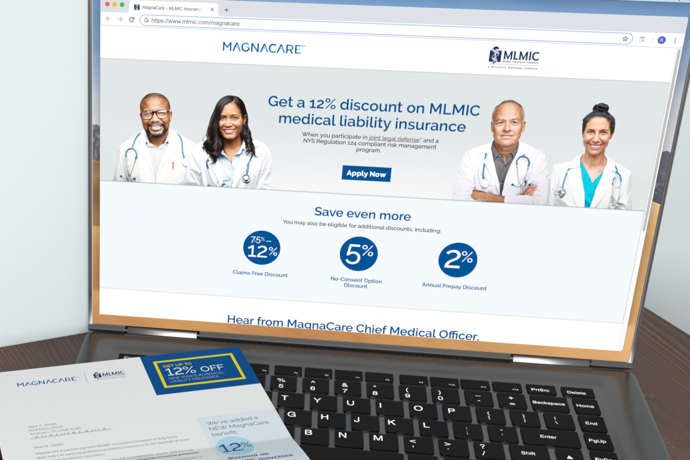6 Tips for Getting Strategic Value from Your Healthcare Marketing Metrics

Healthcare company boards and executives expect positive outcomes from their marketing teams’ efforts, and so healthcare marketers are well versed in the need to track the results of their campaigns. Whether it’s monetizing a media channel or pinpointing the role of a specific creative asset, marketers know they must be able to document ROI.
Even though everyone understands that metrics are necessary and can be instructive, it’s often difficult to know how to configure the proper tracking and reporting mechanisms. To help you set everything up – or ask the right questions as you work with a partner or healthcare marketing agency – here are six tips to ensure that you get the full strategic value from your healthcare marketing metrics:
1. Be specific in how you define “success.”
Many marketing campaigns are built around enrollment periods, and as such, metrics tied to these campaigns often focus on member retention and prospects (leads and leads closed). However, if you are really trying to gauge effectiveness of your marketing, it’s also helpful to decide ahead of time what defines success in a more detailed fashion. What are your goals and objectives channel by channel? What will you need to quantify in order to gauge the success of each medium?
In doing so, be cautious about “soft metrics” (or what some have referred to as “vanity metrics”). Although all response should be noted (whether it is a call from a direct mail piece or a click-through on a digital ad), looking only at response creates an incomplete picture of success. Response needs to be tracked through to conversion. For many reasons (some of which have nothing to do with the brand), digital ads can generate a ton of clicks but very little conversion, and so the value of those clicks as a measure of success is debatable.
2. Establish a reporting framework.
As we outlined in a recent post on strategies for open enrollment, it’s important to create a framework for reporting data. What are the reporting goals? What is the reporting frequency? Who is responsible for collecting information? for analyzing? for formatting? And who should receive the report? In addition to creating a template, your marketing team must have a solid workflow when it comes to gathering/evaluating the data and assembling/distributing the report, which will be at the center of most discussions evaluating the campaign and strategy.
3. Leverage the data for key opportunities.
Data reporting during campaigns is best for identifying the need for mid-stream campaign corrections, flagging implementation errors and issues that need immediate remedy and managing internal expectations. Reporting conducted at the conclusion of a campaign is best for confirming how well campaign objectives were met, gathering insights that help shape future campaign elements (budget allocation, creative, media, calls-to-action, etc.) and establishing benchmarks for comparison with future campaigns.
4. Apply tracking mechanisms as appropriate.
As important as metrics are, don’t let tracking get in the way of generating response – your true objective. For example, a mnemonic phone number may help increase response for radio and OOH tactics. In these cases, you may decide that you’ll forgo unique tracking, opting to give your campaign the best possible opportunity to succeed. (For a few brands, regardless of media, building brand equity in memorable phone numbers – often mnemonic – and web domains outweighs a desire to track.)
In many instances, however, the details made possible by unique tracking are critical. For example, it’s extremely helpful to know if click-throughs and white paper or video downloads lead to actual lead capture and sales. And since the tracking for many media channels and creative assets is less obtrusive (i.e., invisible to the consumer), you’ll want to take advantage of those. Be sure to plan ahead: tracking takes some coordination. Here are some considerations:
- You may need to involve your IT or interactive services department to ensure that web links are set up to be tracked properly. For offline tactics, this may include re-directing vanity URLs or unique backslash URLs so that the traffic that originates offline is bucketed properly in Google Analytics.
- If you secure unique 800#s from your call center, don’t forget to discuss how you want those calls tracked and reported. If you don’t already have this capability, there are third-party vendors who provide unique 800#s and tracking and reporting features.
- When it comes to direct mail, work with your fulfillment department/partner to agree on tracking codes for business reply mail.
5. Accept that more isn’t always better.
Certainly you want to collect the data that informs your campaign’s overall level of success and details the performance of key media within your strategy. That said, not every kernel needs to be tracked, and all data points are not created equally. Focus on metrics that result in actionable insights: too much data is not a good thing. Ask yourself what information you need to make key decisions, and keep it as simple as makes sense.
6. Understand that there’s no such thing as perfect attribution.
In a perfect world, you’d know the source and motivation for every lead, but integrated campaigns don’t allow for that kind of perfect attribution. Consumers may see several pieces of your campaign, for example, and you may not know which specific medium lead to the conversion or the extent to which the whole effort acted in conjunction. Instead, when designed properly, the system of metrics you establish provides a roadmap that informs future strategies and marketing budget allocations. It illuminates the trail a prospect takes from initial campaign/brand exposure to response and, ultimately, to drop off or conversion.









